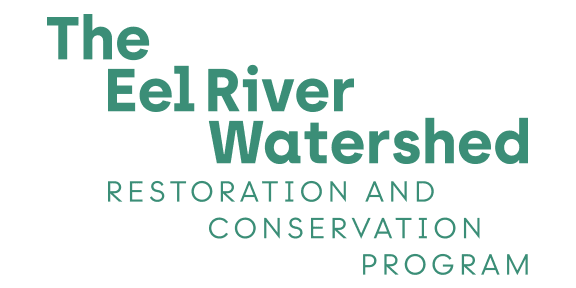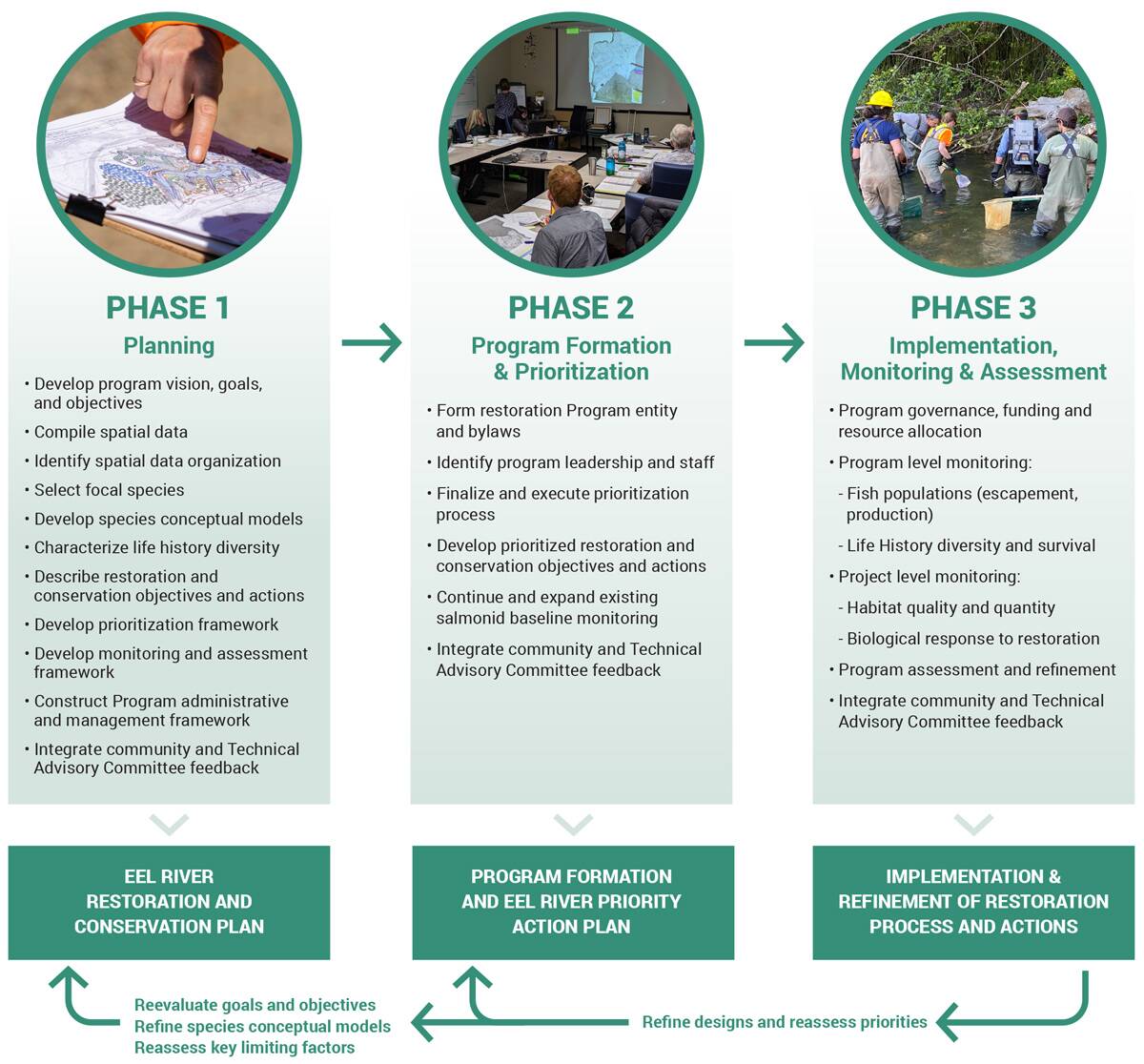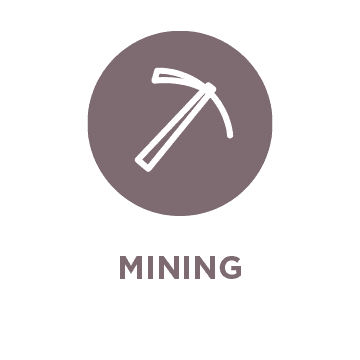
The Eel River epitomizes everything about salmon in California. Lying at the heart of California’s North Coast Region, the Eel River spans five northern counties and 3,684 square miles making it California’s third largest watershed. The Eel was mis-named by European explorers who mistook Pacific lamprey as “eel” and named it the Eel River. In addition to copious runs of Pacific lamprey the Eel River historically supported the third largest runs of salmon and steelhead in California, exceeded only by the Sacramento, San Joaquin, and the Klamath rivers. In a 2010 study commissioned by CalTrout, UC Davis scientists estimated the historic run sizes from the early cannery records and concluded that combined runs of Chinook salmon, coho salmon, and steelhead likely totaled more than a million adult fish annually in good years, of which there more than likely many.
“The Eel River basin once possessed significant populations of at least five distinct kinds of anadromous salmonids, including fall-run Chinook salmon, coho salmon, winter and summer steelhead, and coastal cutthroat trout. In addition, there were small populations of chum and pink salmon and possibly spring Chinook salmon. It is likely that an even greater number of seasonal runs or life-history variants within some species previously co-existed in the Eel River system.”
- Yoshiyama and Moyle 2010


The Eel River Watershed Restoration and Conservation Program
The Eel River Watershed Restoration and Conservation Program aims to take a holistic approach on restoring and conserving the Eel River watershed with a particular focus on the river corridor. To achieve this, the Program has selected a series of focal species (Chinook and coho salmon, steelhead, Pacific lamprey, and green sturgeon) as the cornerstone for restoration and conservation planning. However the Program does not ignore the interconnectedness of the ecosystem and the direct relationships the riparian corridor and upslope processes can have on the river corridor habitat. In addition to restoration and conservation directed towards the aquatic habitat and the species that reside in those habitats, the Program also recognizes the continuous and ongoing threat of climate change to the Eel River watershed and understands that it is necessary to implement climate mitigation strategies and strategic climate planning to support a resilient watershed. Finally, the Program is invested in the community members across the watershed. The Program strives to identify and protect the ecosystems services that support community members such as recreational access, access to clean water, and a robust and harvestable fishery.
The Program is intended to serve as an administrative body that will guide and oversee restoration and conservation in the Eel River Watershed for the foreseeable future. Phase 1 of the program aims to develop a framework for what the Program will become and what key components will guide a successful Program.
Program Vision: A restored Eel River watershed that is composed of diverse and resilient habitats from headwaters to sea, self-sustaining and harvestable native fish, and healthy local communities.

Phase 1
An initial framework for Eel River Restoration and Conservation Program (the Program) was developed in November 2021 to build from the potentially transformational habitat and fish passage improvements anticipated by decommissioning of the Potter Valley Project. The framework described phases designed to holistically conserve and restore riverine corridor habitats and focal species throughout the watershed. Leveraging this framework, CalTrout led a grant proposal to develop Phase 1-Planning for the Eel River Restoration and Conservation Program. Phase 1 includes development of the Eel River Restoration and Conservation Program and the Eel River Restoration and Conservation Plan.The primary outcome of Phase 1 is the Restoration and Conservation Plan for the Eel River watershed The Project Team made up of CalTrout, Stillwater Sciences, Applied River Sciences (subcontractors), and other collaborators, will finalize Phase 1 of the Restoration Program with the completion of the Restoration and Conservation Plan document in June 2024.The work includes coordinating with technical experts, preparing technical information to inform planning workshops, and producing the Plan. The Plan will be implemented during Phases 2 and 3 of the Program.
An interactive web map with preliminary spatial data and other available data used in the Phase 1: Planning for the Restoration and Conservation Program can be viewed here.

















 Dams block access to historical spawning and rearing habitats. Downstream, dams alter the timing, frequency, duration, magnitude, and rate of change of flows decreasing habitat quality and survival.
Dams block access to historical spawning and rearing habitats. Downstream, dams alter the timing, frequency, duration, magnitude, and rate of change of flows decreasing habitat quality and survival.